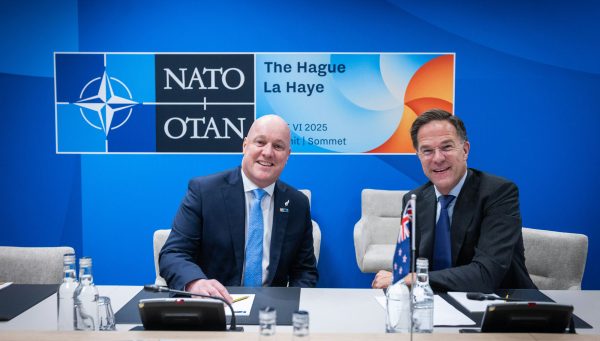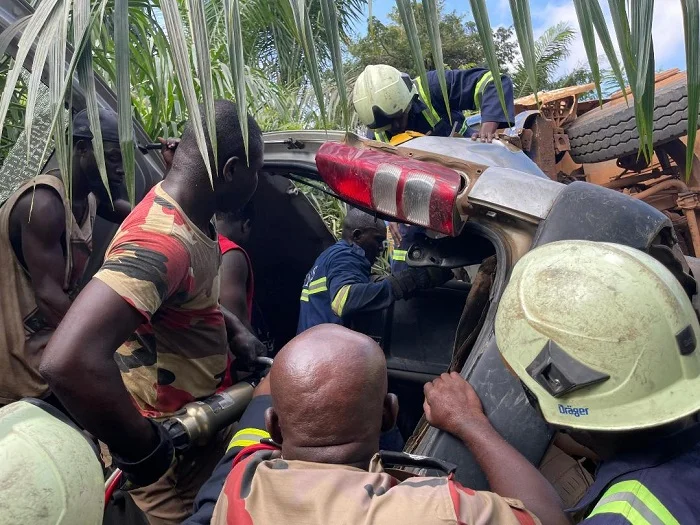By Flynn Acworth
Copyright thediplomat

Strategic and military-industrial ties between New Zealand and its European partners are likely to deepen following Prime Minister Christopher Luxon’s attendance at the NATO Summit in The Hague in June this year. The increasingly close partnership between New Zealand and NATO is a sign of strengthening security linkages between the Indo-Pacific and Europe, pulling the geographically distant regions closer to one another. Documents recently obtained under the Official Information Act show that Luxon’s attendance at this year’s summit had three official objectives: to remind partners that New Zealand is a likeminded supporter of the rules-based international order, to emphasize New Zealand’s relevance as a security partner (particularly in the defense of Ukraine), and to use the opportunity to develop dual-use trade and research relationships with European states. New Zealand is one of NATOs “Indo-Pacific Four” (IP4) partners, along with Australia, South Korea, and Japan. The IP4 has recently become formalized as a minilateral grouping, but the New Zealand-NATO relationship is not new. New Zealand sent officers to Bosnia in the 1990s, contributed to NATO-led missions in Afghanistan, and committed naval resources to anti-terror and anti-piracy NATO operations in the Mediterranean and the Gulf of Aden. The partnership deepened in 2012 with the signing of a tailored partnership agreement that was updated in 2018, and again in 2024. Notably, Luxon was the only leader from the IP4 to attend the 2025 NATO summit, underscoring the importance New Zealand ascribes to the relationship. New Zealand and NATO share the view that the Indo-Pacific and Euro-Atlantic strategic theaters are becoming increasingly interconnected. The partnership with NATO acts as a bridge across these theaters – providing a platform for dialogue on current and emerging issues, and facilitating cross-regional cooperation on key strategic areas. For example, the NATO/IP4 Flagship Projects scheme currently focuses on cybersecurity, artificial intelligence (AI), disinformation, and military healthcare. New Zealand’s attendance at the latest summit allowed it to share its perspectives on Indo-Pacific issues, to disclose insights gained from Luxon’s recent trips to China and India, and to ensure that NATO partners continue to factor the region into their discussions, strategies, and resource commitments. The summit also gave New Zealand a valuable window into how European states are responding to the shifting geostrategic environment – particularly given the increasingly unpredictable and revisionist behavior of the United States, and the developing “autocratic alliance” between Russia, China, and North Korea. Luxon had 15 bilateral meetings scheduled over the three days of the summit. In each of these meetings, his aim was to highlight the links between Euro-Atlantic and Indo-Pacific security – for example, North Korea’s open deployment of troops to Russia’s front line. The meetings also gave Luxon the opportunity to reinforce New Zealand’s staunch commitment to the rules based international order by highlighting ongoing lethal and non-lethal assistance to Ukraine (which, as of June 22, amounted to NZ$168 million or around US$100 million), and to outline the planned doubling of New Zealand’s defense expenditure from around 1 percent to over 2 percent of GDP over the next eight years. With NATO allies now committed to investing 5 percent of GDP annually on defense, New Zealand anticipates that they will begin to look to the IP4 to fill gaps in current capabilities. The EU’s defense white paper published in March 2024 identified seven “priority capability areas” where increased investment is required: air and missile defense, artillery systems, ammunition and missiles, drones and counter drone systems, military mobility, AI/quantum/cyber/electronic warfare and other “strategic enablers” such as intelligence and surveillance capabilities, maritime domain awareness, and the use and protection of space and secure communications assets. The Luxon administration is likely to see this as an opportunity to bolster investment in New Zealand’s local industry, not only supporting European security efforts but also growing a dual-use defense industrial base to enable the ongoing modernization of the New Zealand Defense Force as detailed in its 2025 Defense Capability Plan. This year’s NATO summit made clear that the New Zealand-NATO relationship, while being built on shared values and likeminded perspectives, is also one of strategic utility. As trust in the United States dwindles and New Zealand’s participation in AUKUS Pillar Two appears less than certain, European relationships are becoming increasingly attractive. New Zealand’s advanced information technology services and specialized manufacturing sectors give it the potential to be an innovative dual-use technology exporter in the maritime, space, and drone domains. Companies like Syos Aerospace, a New Zealand based drone manufacturer that this year signed a NZ$68 million contract to sell drones to the United Kingdom for use in Ukraine, and Dawn Aerospace, a satellite propulsion provider contracted to work on European military LEO satellite constellations, provide early examples of the developing military industrial ties between New Zealand and Europe. However, despite the existing free trade agreement, New Zealand is currently the only IP4 state to not be an official Security and Defense Partner of the EU – a requirement for companies that want to access procurement opportunities under the Security Action for Europe (SAFE) loan scheme. The signing of such an agreement would firmly place New Zealand inside Europe’s emerging defense innovation architecture, reducing exposure to the volatility of U.S. strategy, and providing an alternative pathway to defense modernization in a world where rules are rapidly giving way to power. New Zealand will also need to ensure that its ambitions do not clash with Europe’s protectionist defense industrial policy, which states that members should “spend at least half of their defense procurement budget on products made in Europe” by 2030. At the same time, New Zealand should avoid competing with partners such as South Korea, a far more advanced defense exporter that is also deepening industrial ties to NATO allies (for example, by establishing a defense industrial working group at the June summit). At the end of the day, New Zealand should focus on what it does best: engaging in practical, problem-based, dual-use innovation in the aerospace, maritime, and ICT sectors. Successfully carving out high-tech export niches will reduce overlaps with partners, meet immediate defense needs, and most importantly, produce technologies that will matter in peace as much as they do in war.



